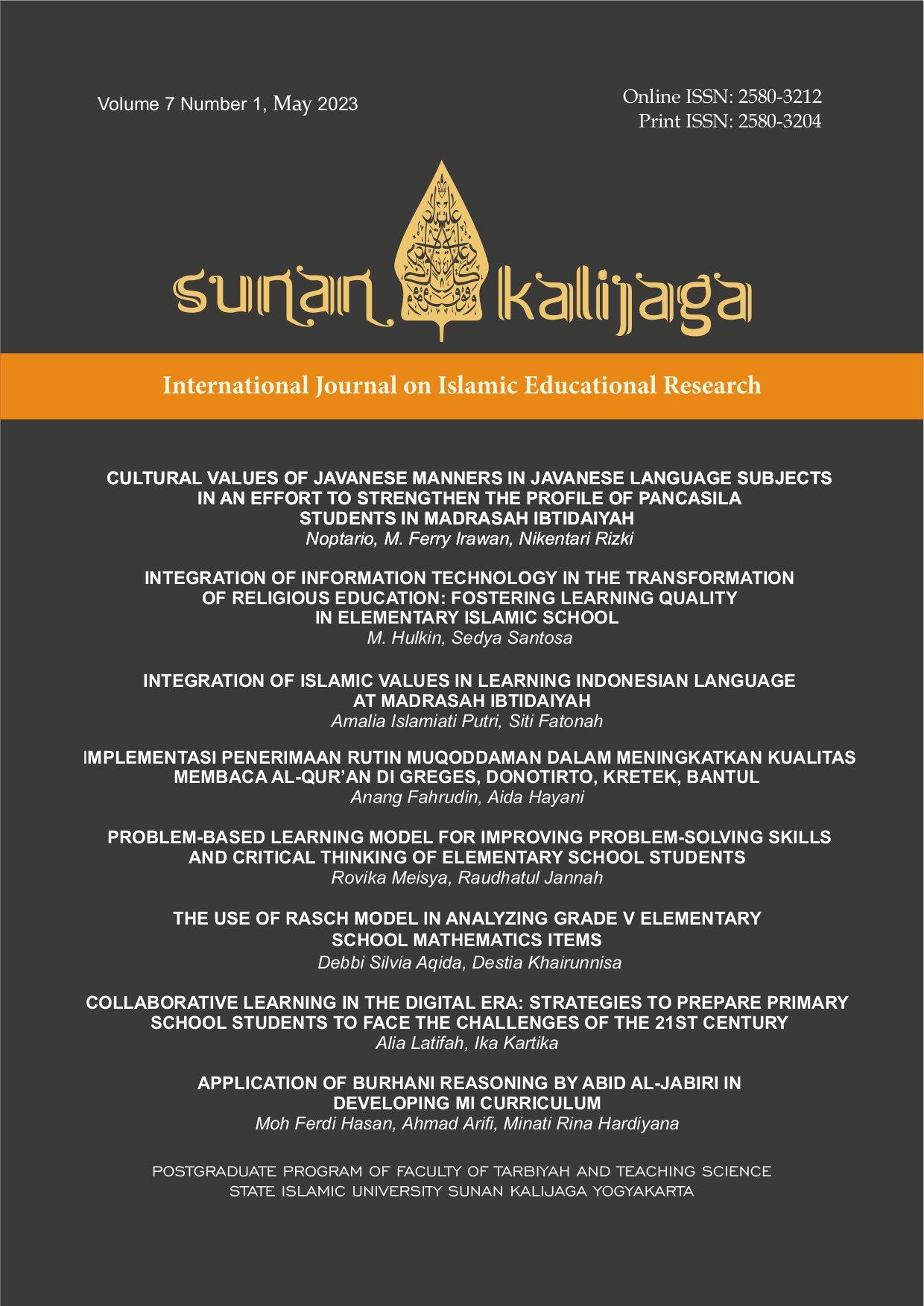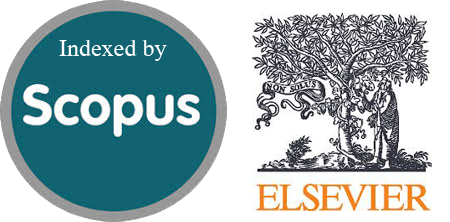The Use of Rasch Model in Analyzing Grade V Elementary School Mathematics Items
DOI:
https://doi.org/10.14421/skijier.2023.71.06Keywords:
Item analysis, Rasch Model, WinstepAbstract
This study was conducted to analyze the items used to measure students' mathematical abilities in a private elementary school in Pekalongan. There were 22 fifth-grade students involved in the study. The test items consisted of 15 multiple-choice questions related to the topics of spatial calculations and data presentation. The Rasch model was used to determine the fitness of these test items. The analysis was carried out using the Winsteps software. Test items were considered fit for the model in the Winsteps program if the Outfit MNSQ value ranged from 0.5 to 1.5, the Outfit ZSTD value was between -2 and 2, and the Pt-measure Corr value was positive, indicating that the item was a good fit for the model (Sumintono & Widiharso, 2015:98). The Winsteps program's output revealed that 15 test items were in accordance with the Rasch model, with an Outfit MNSQ value of 1.03. The Outfit ZSTD value was 0.0. Additionally, 11 test items had a positive Pt-measure Corr, while 4 test items had a negative Pt-measure Corr, indicating that these 4 items did not fit the model.
Keywords: Item analysis, Rasch Model, Winstep.
Downloads
References
Ardiyanti, Difa. “Aplikasi Model Rasch Pada Pengembangan Skala Efikasi Diri Dalam Pengambilan Keputusan Karir Siswa.” Jurnal Psikologi 43, no. 3 (2016): 248–263.
Dunn, Lee, Chris Morgan, Meg O’Reilly, and Sharon Parry. The Student Assessment Handbook: New Directions in Traditional and Online Assessment. Routledge, 2003.
Engelhard Jr, George. Invariant Measurement: Using Rasch Models in the Social, Behavioral, and Health Sciences. Routledge, 2013.
Hambleton, RK. “Swaminathan. H., & Rogers, HJ (1991). Fundamentals of Item Response Theory” (n.d.).
Linacre, John M. “Understanding Rasch Measurement: Estimation Methods for Rasch Measures.” Journal of outcome measurement 3 (1999): 382–405.
Mustafidah, Hindayati, and Harjono Harjono. “Implementasi Program QUEST Untuk Menganalisis Butir Soal Bagi Guru-Guru SMP Muhammadiyah 2 Karanglewas.” JPPM (Jurnal Pengabdian dan Pemberdayaan Masyarakat) 3, no. 2 (2019): 321–328.
———. “Implementasi Program QUEST Untuk Menganalisis Butir Soal Bagi Guru-Guru SMP Muhammadiyah 2 Karanglewas.” JPPM (Jurnal Pengabdian dan Pemberdayaan Masyarakat) 3, no. 2 (2019): 321–328.
Retnawati, Heri. Analisis Kuantitatif Instrumen Penelitian (Panduan Peneliti, Mahasiswa, Dan Psikometrian). Parama publishing, 2016.
Rozeha, AR, Z Azami, and M Mohd Saidfudin. “Application of Rasch Measurement in Evaluation of Learning Outcomes: A Case Study in Electrical Engineering,” 2007.
Sumarni, Sri. “Designing Ict Competences-Integrated Assessment Instruments Of Practical Key Teaching Competences For English Language Education Study Program.” IJLECR (International Journal of Language Education and Cultural Review) 5, no. 1 (2019): 47–55.
Sumintono, Bambang, and Wahyu Widhiarso. Aplikasi Pemodelan Rasch Pada Assessment Pendidikan. Trim komunikata, 2015.
Syahputri, Nita. “Rancang Bangun Media Pembelajaran Matematika Sekolah Dasar Kelas 1 Menggunakan Metode Demonstrasi.” Jurnal sistem informasi kaputama (JSIK) 2, no. 1 (2018).
Thissen, David. “Psychometric Engineering as Art.” Psychometrika 66 (2001): 473–485.










